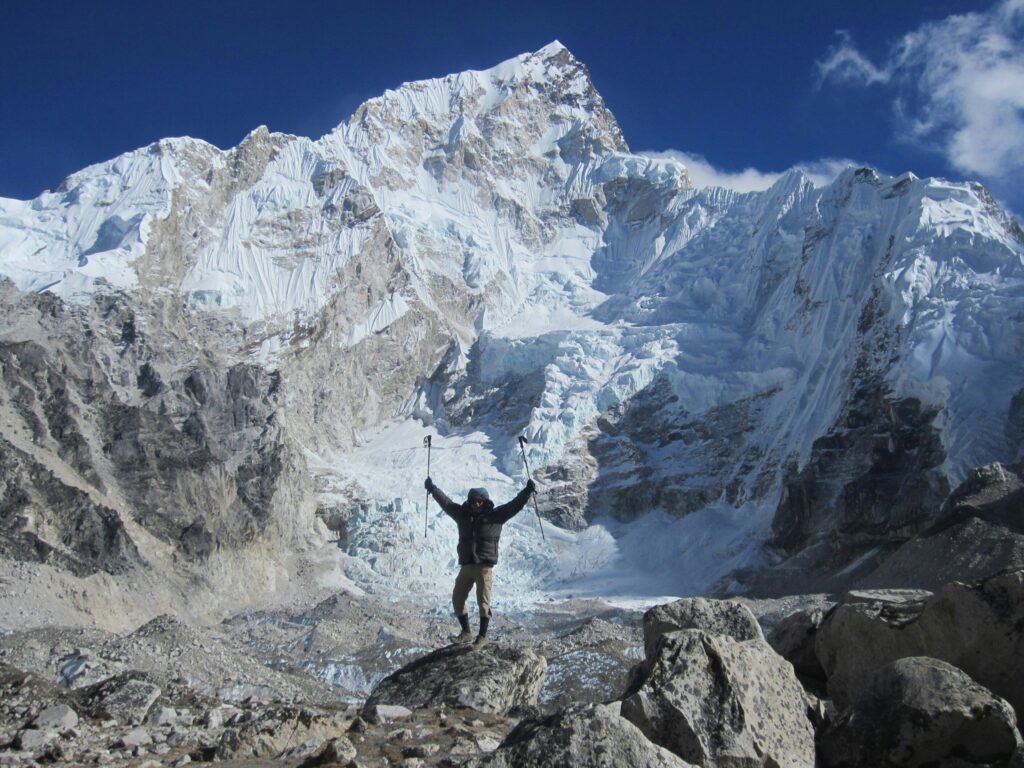Tourists in Kathmandu are tempted everywhere by advertisements for trekking expeditions to Everest Base Camp. If you didn’t know better, you might think it’s just a nice hike in the Nepalese countryside.
Typically the lower staging post for attempts on the summit, the camp is still 5,364 meters above sea level and a destination in its own right. Travel agencies say no prior experience is required, and all equipment will be provided. Social media, too, is filled with posts enticing potential trekkers to make the iconic journey.
But there is a real risk of creating a false sense of security. An exciting adventure can quickly turn into a struggle for survival, especially for novice mountaineers.
Nevertheless, Sagarmatha National Park is deservedly popular for its natural beauty and the allure of the world’s highest peak, Chomolungma (Mount Everest). It is also home to the ethnically distinctive Sherpa community.
Consequently, the routes to Everest Base Camp are among the busiest in the Himalayas, with nearly 60,000 tourists visiting the area each year. There are two distinct trekking seasons: spring (March to May) and autumn (September to October).
High mountains require everyone to be properly prepared. Events which under normal conditions might be a minor inconvenience can be magnified in such an environment and pose a serious risk.
Even at the start of the trek in Lukla (2,860m), one is exposed to factors that can directly or indirectly affect one’s health, especially altitude mountain sickness or unfamiliar bacteria.
We interviewed 24 trekkers in May this year, as well as 60 residents and business owners in May 2023, to explore some of the safety issues anyone considering heading to base camp should be aware of.
Life at high altitude
First, it’s vital to choose goals within one’s technical and physical capabilities. The human body can adjust to altitudes up to 5,300m, but altitude mountain sickness can occur at just 2,500m, lower than Lukla. Proper acclimatization above 3,000m involves ascending no more than 500m a day and resting every two to three days at the same altitude. The recommended “saw tooth system” involves climbing during the day and descending to sleep at a lower level, though this is not always followed.
Residents of the Khumbu region are aware of tourists who do not acclimatize properly or pay attention to their surroundings. Hiring a local guide is advisable for inexperienced trekkers, as medical evacuations are sometimes necessary. Regular health checks are essential, especially for symptoms of altitude mountain sickness like headache, nausea, dizziness, and fatigue.
Using a reputable local trekking agency may be more costly but can ensure safety and help visitors appreciate the local culture without negative impacts on the community. Trekkers often focus on reaching base camp for a photo and then opt for a helicopter ride back to Kathmandu, which can strain host-guest relations and irritate local communities.
Monitoring food and drink intake is crucial to prevent food poisoning, especially at high altitudes where dehydration is a significant risk. Spending a few days acclimating to the local bacterial flora at a lower altitude in Nepal before trekking to higher elevations can help prevent illness. Embracing local cuisine, like daal bhat, is recommended over demanding Western dishes that may not be readily available or prepared to expectations by local establishments.


